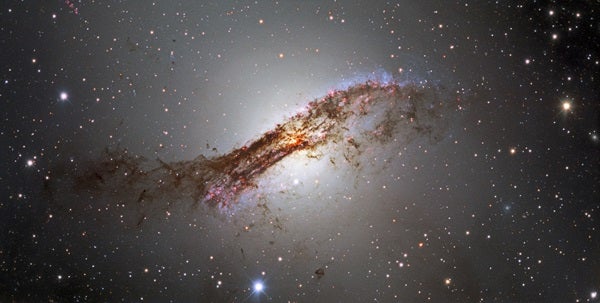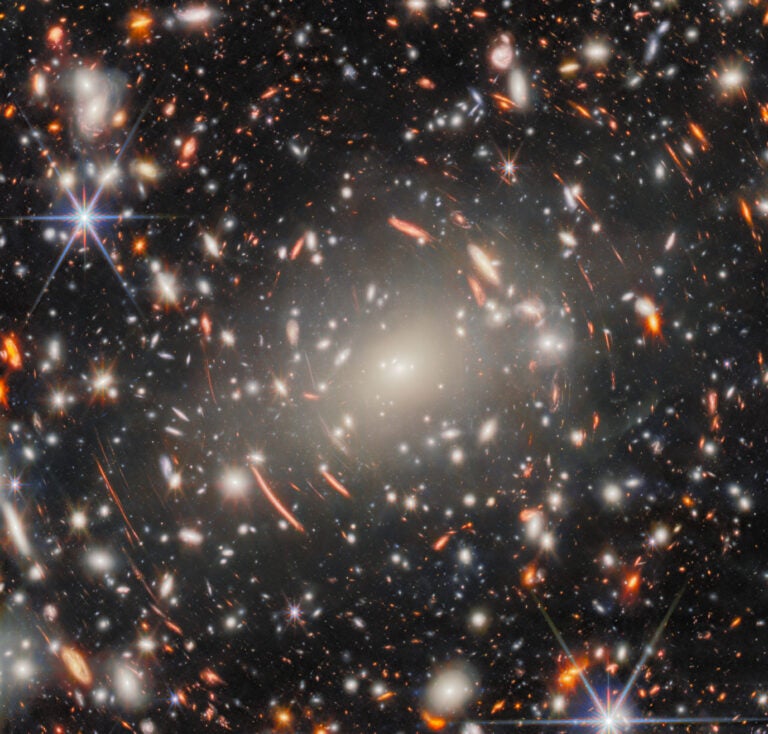The spectacular dust lane of the galaxy Centaurus A is on full display in this gorgeous image snapped by the Dark Energy Camera (DECam) on the Víctor M. Blanco 4-meter Telescope at Cerro Tololo Inter-American Observatory in Chile.
The dark branches of dust that appear draped across the galaxy’s inner bulge are consequences of a past collision, when an elliptical galaxy merged with a smaller spiral galaxy. The result is a peculiar galaxy that doesn’t fit neatly into traditional classifications: It can be considered either an elliptical or a lenticular galaxy, one that combines traits of ellipticals and spirals.
At a distance of roughly 12 million light-years, Centaurus A (also known as NGC 5128) is also one of the closest active galaxies. Unseen in this visible-light image are the powerful, X-ray emitting jets that blast out from the supermassive black hole in the galaxy’s core, as well as the giant lobes of hot gas emitting radio waves.
This particular image, released Aug. 31, is just one small section of a wide-field view captured by DECam during an observing campaign that is meant to help astronomers map out operations of the upcoming Vera C. Rubin Observatory, scheduled to come online in 2023.
Centaurus A is a popular target for amateur and professional astronomers alike. It was recently observed by the Event Horizon Telescope, the globe-spanning array of radio dishes that snapped the first ever direct image of a black hole.










